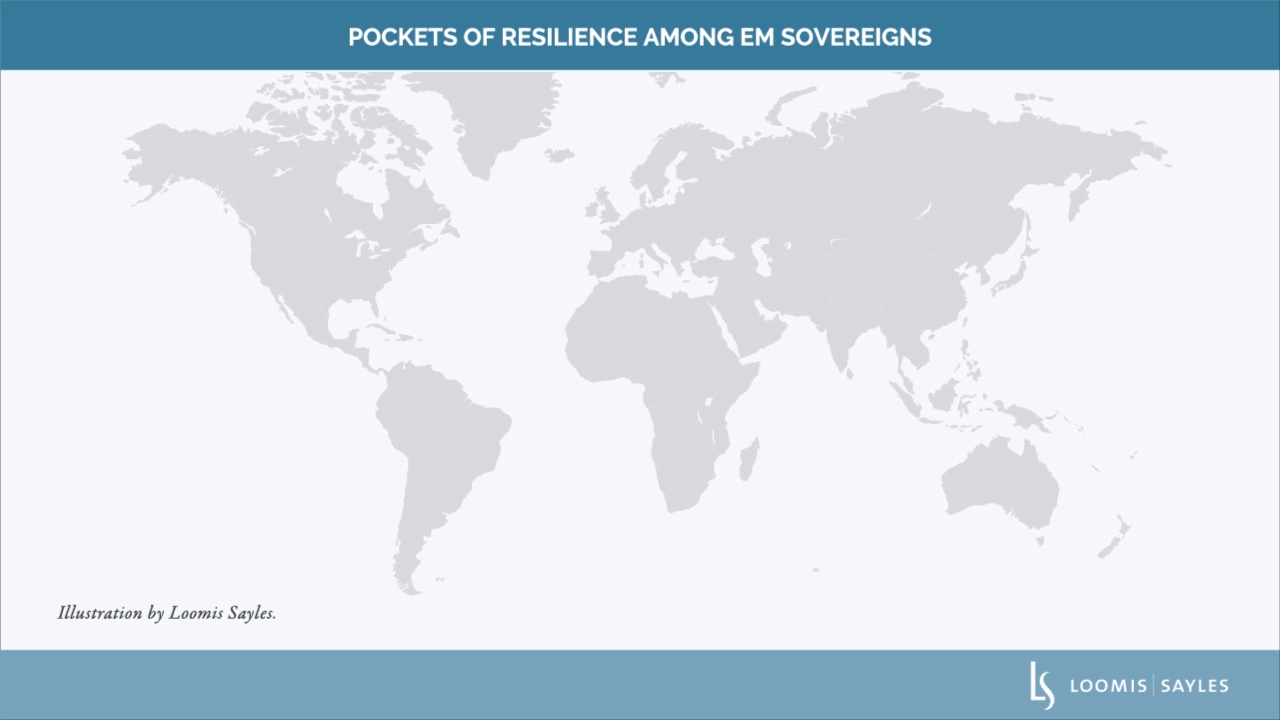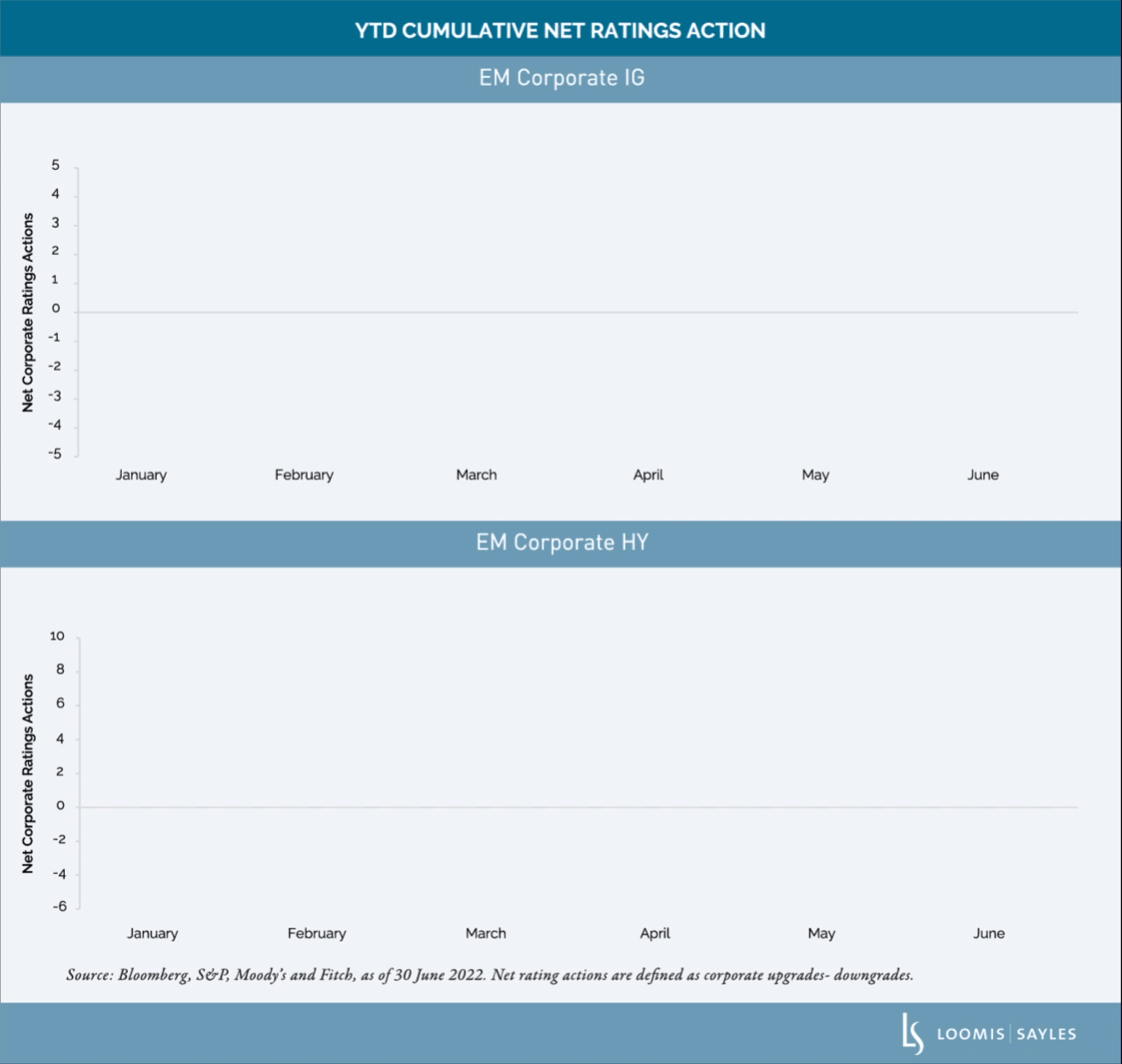To date, 2022 has been rife with credit headwinds—higher US Treasury bond yields, persistent inflation, the Russia-Ukraine war and COVID-19-related disruptions to China’s efforts to stimulate growth. You might think these headwinds would be broadly negative for emerging market (EM) debt, but we see bright spots within the EM sovereign and corporate landscape.
Pockets of resilience among EM sovereigns
EM sovereign fundamentals have come under pressure since the start of the COVID-19 pandemic (March 2020), with credit rating downgrades outpacing upgrades. However, four major EM countries have surprised us with their resilience. South Africa, India and Indonesia improved their fiscal balances and indebtedness ratios, which led to positive changes to their rating outlooks in the first half of the year. Similarly, Brazil had a positive outlook revision in July. Revenues increased in all four countries, underpinned by either stronger growth or improved terms of trade.

Positive ratings trends among EM corporates
Year to date, there have been more than 200 negative ratings actions within the corporate opportunity set. Positive ratings action has failed to keep pace, with a little more than 60 upgrades. However, aggregate corporate ratings actions fail to capture the entire story.[i] Excluding sovereign-related downgrades and the Chinese property sector, we see positive ratings trends emerging across regions in both the investment grade (IG) and high yield (HY) segments. Latin America led net positive cumulative ratings action in both the IG and HY segments. Within the high yield space, African corporates also stand out in terms of positive actions.

Potential opportunity in improving credit stories
These pockets of strength in select regions and sectors help demonstrate the breadth and depth of emerging market debt. In our view, the evolving asset class continues to offer potential opportunities for fundamental investors seeking improving credit stories. We think commodity-linked credits currently look attractive, as they have improved balanced sheets after a recent period of deleveraging and are positioned to withstand slowing global demand. We believe utilities, financials and technology, media and telecommunications, typically viewed as resilient industries, should also continue to outperform against a backdrop of macro uncertainty.

WRITTEN BY:


[i] Source: Bloomberg, S&P, Moody’s and Fitch as of 30 June 2022.
MALR029471
Commodity, interest and derivative trading involves substantial risk of loss. This is not an offer of, or a solicitation of an offer for, any investment strategy or product. Any investment that has the possibility for profits also has the possibility of losses, including the loss of principal.
Performance data shown represents past performance and is no guarantee of, and not necessarily indicative of, future results.








